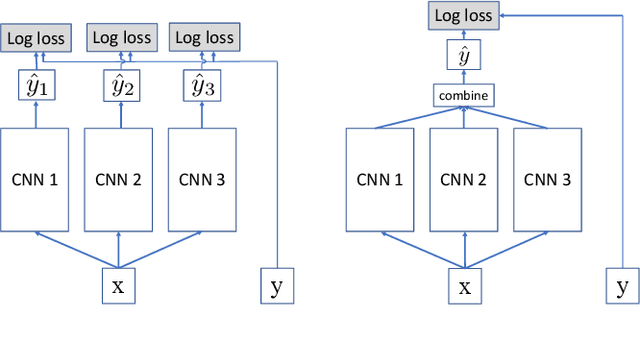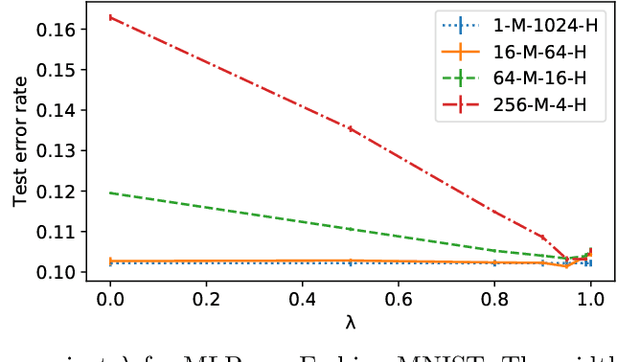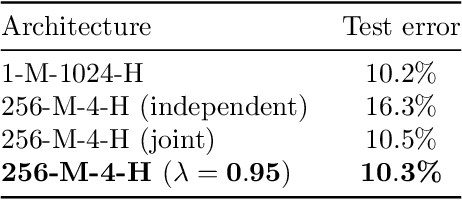Dan-Andrei Iliescu
Joint Training of Neural Network Ensembles
Feb 26, 2019



Abstract:We examine the practice of joint training for neural network ensembles, in which a multi-branch architecture is trained via single loss. This approach has recently gained traction, with claims of greater accuracy per parameter along with increased parallelism. We introduce a family of novel loss functions generalizing multiple previously proposed approaches, with which we study theoretical and empirical properties of joint training. These losses interpolate smoothly between independent and joint training of predictors, demonstrating that joint training has several disadvantages not observed in prior work. However, with appropriate regularization via our proposed loss, the method shows new promise in resource limited scenarios and fault-tolerant systems, e.g., IoT and edge devices. Finally, we discuss how these results may have implications for general multi-branch architectures such as ResNeXt and Inception.
 Add to Chrome
Add to Chrome Add to Firefox
Add to Firefox Add to Edge
Add to Edge